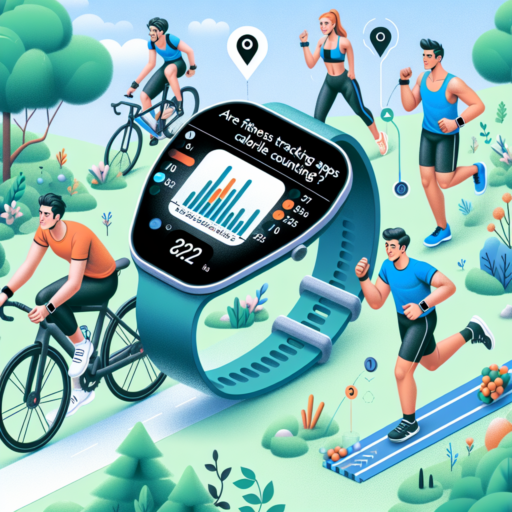Is Strava accurate with calories?
When it comes to tracking fitness activities, Strava has become a go-to app for many athletes and fitness enthusiasts. However, a common question that emerges is how accurate is Strava when it calculates the calories burned during these activities? Understanding the technology and factors at play is crucial to get a grasp on the accuracy of Strava’s calorie count.
Strava uses a combination of your personal data—such as weight, height, age, and gender—along with the activity’s duration and intensity, to estimate the calories burned. This calculation also integrates the type of activity, whether you’re cycling, running, or engaging in another form of exercise. Despite this seemingly comprehensive approach, it’s important to acknowledge that Strava’s calorie estimations are just that: estimations.
Several factors can impact the accuracy of these estimates. The quality of the data inputted by the user plays a significant role. Inaccuracies in the personal information or discrepancies in the GPS data used to track the activity can lead to miscalculations. Furthermore, Strava’s algorithms might not account for individual variations in metabolism or fitness level, which can also affect the total calories burned. Therefore, while Strava provides a good starting point, it’s wise to use its readings as part of a broader fitness tracking effort rather than an absolute measure.
How does Strava calculate calories?
Understanding how Strava calculates calories is crucial for athletes and fitness enthusiasts who rely on accurate data to track their fitness progress. Strava’s algorithm for calculating caloric expenditure is a blend of science, user input, and integration with other fitness devices. This advanced calculation takes into account various factors that influence energy consumption during exercise.
Factors Influencing Calorie Calculations
Several key elements play a vital role in the accuracy of Strava’s calorie calculations:
- User Profile Information: Strava requires details such as weight, height, age, and sex. These metrics are crucial since they significantly impact how many calories a person burns during physical activities.
- Type of Activity: Strava distinguishes between different types of activities such as cycling, running, swimming, etc., each consuming energy at different rates.
- Heart Rate Data: If a user connects a heart rate monitor to their Strava account, the platform uses this data to enhance the accuracy of the calorie burn estimate. The heart rate provides insights into the exertion level, directly influencing calorie calculation.
Integration with Fitness Devices
Strava’s compatibility with various fitness devices enriches the calorie calculation process. Devices like GPS watches and power meters measure exercise intensity and duration more precisely, which, when synced with Strava, allows for a more accurate estimate of calories burned. Combining device data with Strava’s internal algorithms helps tailor the caloric burn analysis to each individual’s activity and effort level.
No se han encontrado productos.
Why are my Strava calories so low?
If you’ve been noticing that the calorie counts on your Strava activities seem suspiciously low, you’re not alone. Many athletes and fitness enthusiasts rely on Strava to track their workouts, but sometimes find the calorie estimates to be puzzlingly modest. There are a few key reasons for this that are worth exploring to understand how Strava calculates those numbers, and why they might not always match your expectations.
Accuracy of the Data Input
One primary factor in the discrepancy of calorie counts can be traced back to the accuracy of the data you input into Strava. The app relies heavily on the correctness of information such as weight, height, and fitness equipment calibration. If any of this information is outdated or inaccurately entered, Strava’s algorithm may not provide the most precise calorie burn estimate. Ensuring that your profile is updated and that you’re using well-calibrated equipment can help in getting more accurate calculations.
Strava’s Calculation Method
Another aspect to consider is Strava’s unique method of calculating calorie burn. Unlike some fitness apps that may use a more generalized approach, Strava often uses a combination of your physical metrics, the intensity of the activity, and, for cycling, even the bike type and terrain. However, it doesn’t always take into account heart rate data unless a heart rate monitor is connected and actively used during the activity. This means that Strava’s calorie estimates might appear lower, especially if it underestimates the intensity of your workouts. Using a heart rate monitor can provide a more detailed input, potentially leading to higher and perhaps more accurate calorie burn figures.
Understanding why your Strava calorie counts are lower than expected can be crucial in aligning your fitness goals and expectations. While it’s essential to take note of these estimates, remember that many factors contribute to overall fitness and well-being beyond calories burned. Regularly update your Strava profile and consider using additional tools like heart rate monitors for more personalized and accurate activity tracking.
Are activity tracker calories accurate?
When it comes to monitoring physical activities and overall health, many people turn to activity trackers for insights. One popular feature of these devices is the ability to estimate the number of calories burned. However, the accuracy of these estimates often comes into question.
Activity trackers calculate calories burned based on a combination of data points, including heart rate, steps taken, and sometimes even your location to infer the type of activity being performed. Despite the sophistication of these algorithms, there are inherent challenges that can affect accuracy. For instance, personal factors like metabolism, body composition, and even the specific way an individual moves can significantly influence calorie burn but might not be fully accounted for by a generic activity tracker.
Factors Influencing Calorie Count Accuracy
- Personal Data Input: The accuracy of calorie counts largely depends on the correctness of the personal information you enter into the tracker, such as weight, height, and age.
- Type of Activity: Some activities, especially those that are stationary or involve irregular movements (like weight lifting or yoga), can be harder for trackers to accurately monitor in terms of calorie expenditure.
- Device Placement: Where you wear your tracker can also influence its accuracy. For example, a device worn on the wrist may record data differently than one worn on the torso.
While activity trackers offer a convenient and easy way to get an estimate of your calorie expenditure, several factors affect their precision. Understanding these can help individuals better interpret the data these devices provide, though it’s always recommended to use them as a tool for general guidance rather than exact measurements.




